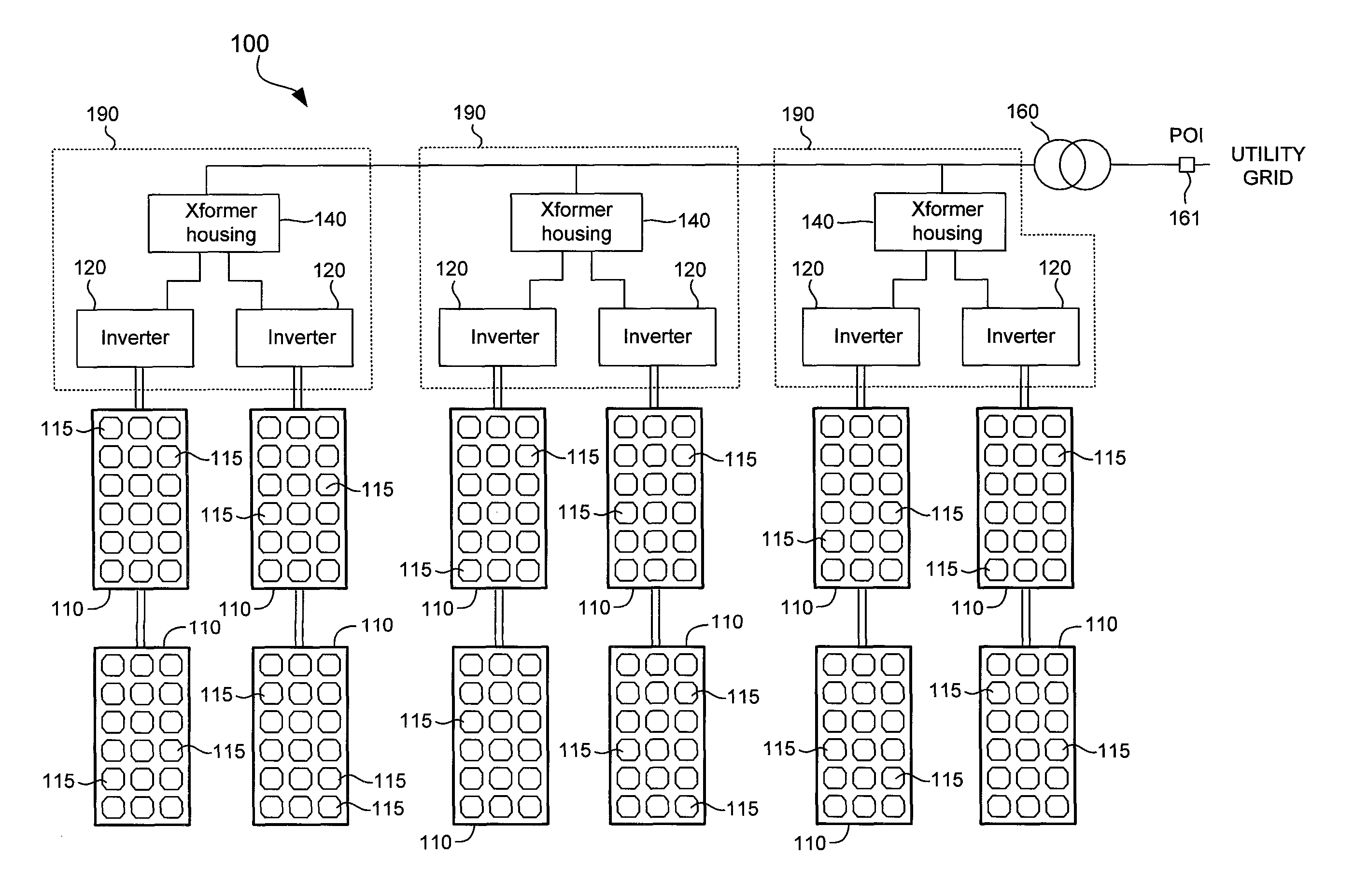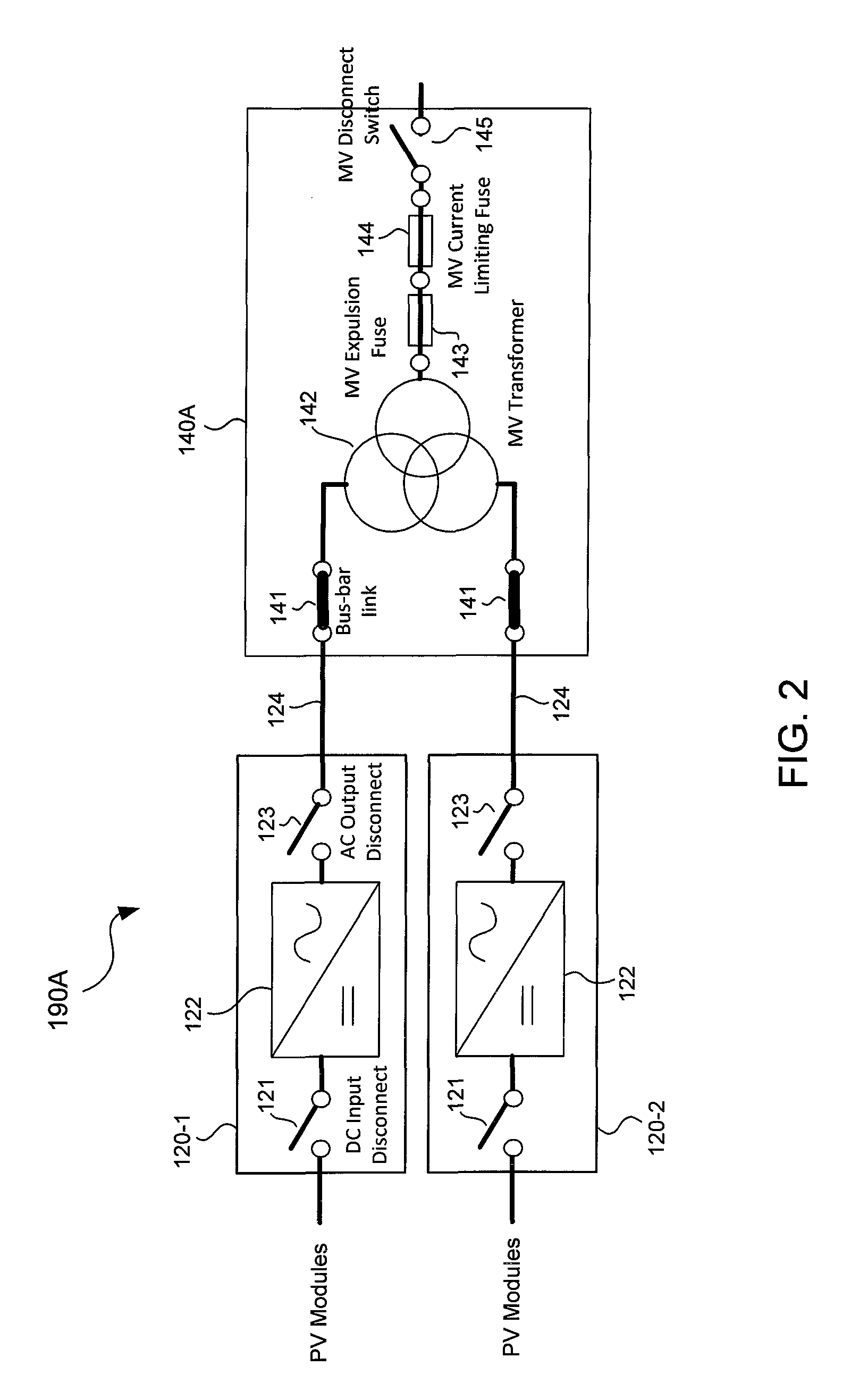Mitigation of arc flash hazard in photovoltaic power plants
a photovoltaic power plant and arc flash technology, applied in the field of solar cells, can solve the problems of high arc flash energy within the inverter station, serious workplace hazards, and insufficient protection of workers at the inverter station, and achieve the effect of increasing the current rating
- Summary
- Abstract
- Description
- Claims
- Application Information
AI Technical Summary
Benefits of technology
Problems solved by technology
Method used
Image
Examples
Embodiment Construction
[0026]In the present disclosure, numerous specific details are provided, such as examples of apparatus, components, and methods, to provide a thorough understanding of embodiments of the invention. Persons of ordinary skill in the art will recognize, however, that the invention can be practiced without one or more of the specific details. In other instances, well-known details are not shown or described to avoid obscuring aspects of the invention.
[0027]Conventional solutions to arc flash hazard described above are based on the premise that the solution should be common to both normal operational and maintenance conditions, i.e., the solution needs to guarantee the arc flash risk category is not higher than appropriate for safely performing commissioning and maintenance activities while ensuring the normal operating conditions are not impacted. However, a single setting of a protective device for both operation and maintenance does not guarantee the protective device can clear the fa...
PUM
 Login to View More
Login to View More Abstract
Description
Claims
Application Information
 Login to View More
Login to View More - R&D
- Intellectual Property
- Life Sciences
- Materials
- Tech Scout
- Unparalleled Data Quality
- Higher Quality Content
- 60% Fewer Hallucinations
Browse by: Latest US Patents, China's latest patents, Technical Efficacy Thesaurus, Application Domain, Technology Topic, Popular Technical Reports.
© 2025 PatSnap. All rights reserved.Legal|Privacy policy|Modern Slavery Act Transparency Statement|Sitemap|About US| Contact US: help@patsnap.com



